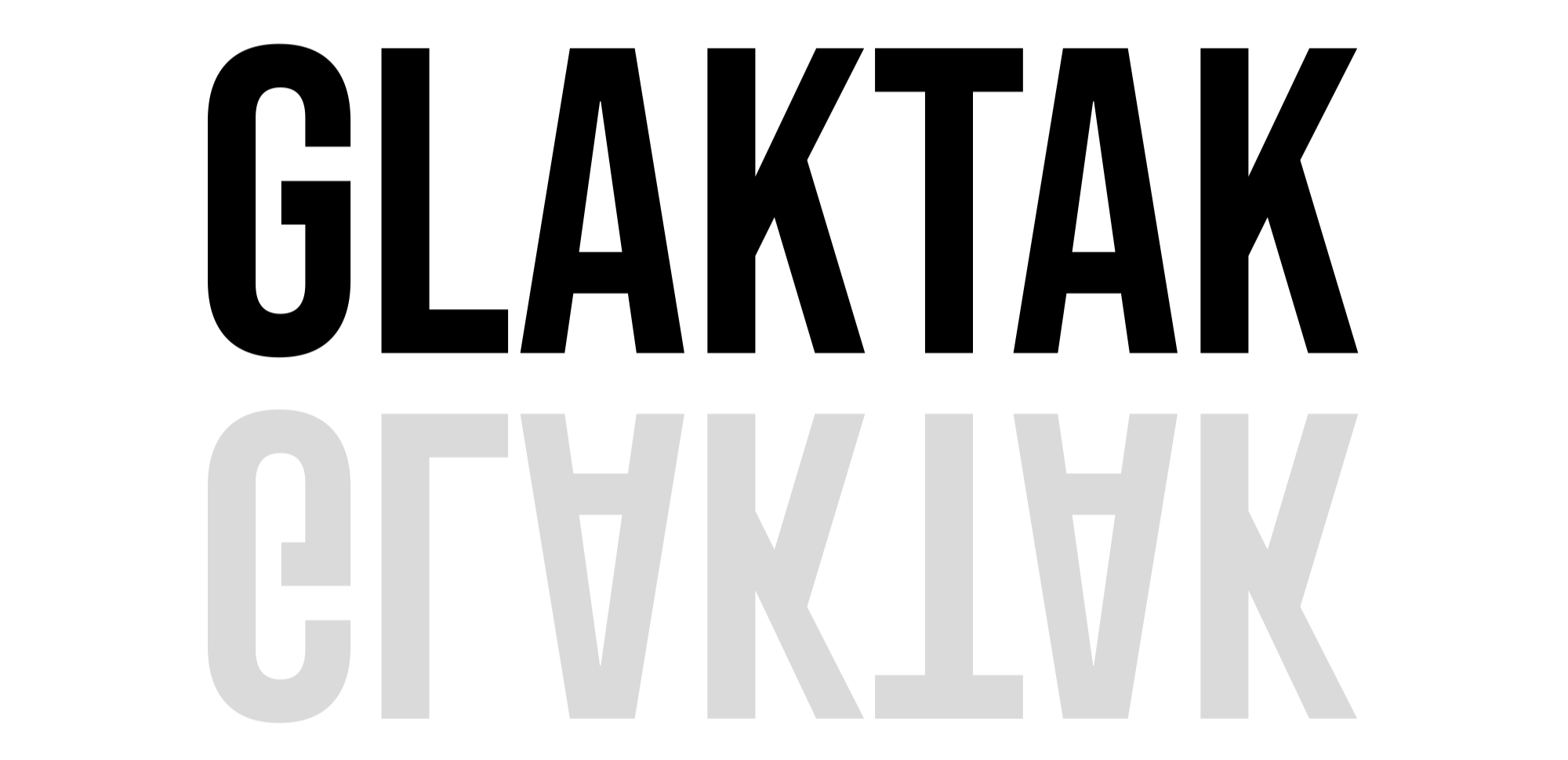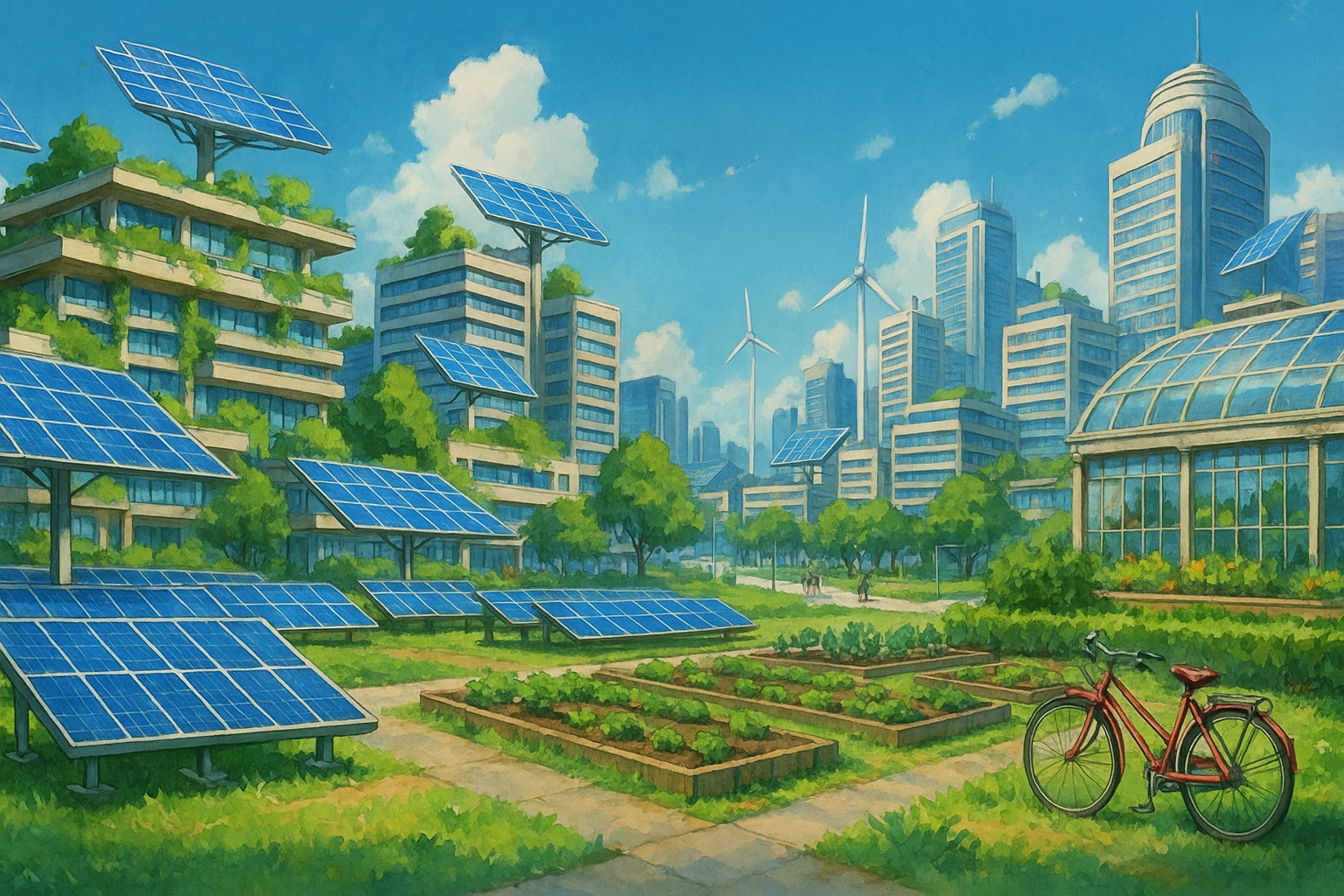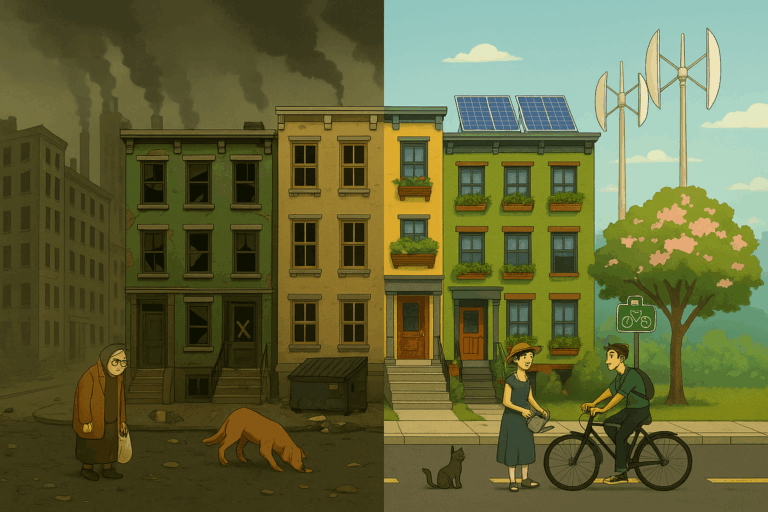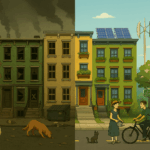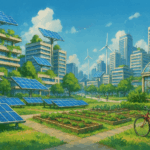Introduction: A Future Worth Building
When we imagine the future, it’s often painted in shades of gray—grim dystopias ruled by mega-corporations, ecological collapse, or cold, lifeless cities driven by AI. But what if the future looked radically different? What if it were green, decentralized, community-powered, and beautiful? That’s the promise of solarpunk: a genre, aesthetic, and socio-political movement that dares to imagine a world where both people and the planet thrive. Rooted in environmentalism, social justice, and practical optimism, solarpunk envisions a future that works—because it has to. And more importantly, it shows us how to get there.
What Exactly Is Solarpunk?
Solarpunk is difficult to pin down because it’s not just a style or story—it’s a framework for the future. It spans literature, fashion, architecture, activism, gardening, and even DIY engineering. At its core, solarpunk embraces optimism in the face of climate anxiety, promotes decentralized systems and local solutions, and emphasizes sustainable technology that enhances rather than exploits life. It values diversity, community, and mutual aid. As Sarena Ulibarri, editor of the solarpunk anthology Glass and Gardens, put it: “We know what a dystopia looks like. Let’s start imagining better futures.” Solarpunk asks: What would a future look like in which we solve the climate crisis, rather than merely survive it?
Origins of the Solarpunk Movement
The term “solarpunk” first appeared online in the late 2000s, evolving in parallel with movements like steampunk and cyberpunk. But while those genres often revel in broken systems or anarchic tech, solarpunk was born out of necessity—a reaction to a world in crisis. It draws from Afrofuturism, Indigenous design, permaculture, regenerative agriculture, climate fiction (cli-fi), grassroots activism, and open-source culture. As the effects of climate change, inequality, and technological overreach mount, solarpunk offers a counter-narrative: one where progress means balance, not domination.
What Does Solarpunk Look Like?
Visually, solarpunk is striking. Imagine lush rooftop gardens on art deco high-rises, solar panels and wind turbines integrated seamlessly into homes, and public spaces filled with edible landscaping and community co-ops. Homes are built from recycled materials and powered by the sun. Fashion is made from natural fibers and local textiles, designed for repairability. Nature is not something to be conquered—it’s interwoven with every aspect of life. Solarpunk blends high tech with low impact, where innovation harmonizes with sustainability. As writer and designer Adam Flynn noted in Solarpunk: Notes toward a manifesto, solarpunk is about “a world that is both high-tech and ecologically sound.”
Real-World Solarpunk: Not Just Fiction
While solarpunk may have started as a speculative genre, it’s increasingly real. Across the globe, small and large-scale initiatives are proving the solarpunk ethos is achievable. In cities like New York and Tokyo, microfarms are turning rooftops into food hubs. These systems allow year-round growing with minimal space and water use, even on urban rooftops. Community-owned solar grids are sprouting across rural towns and urban neighborhoods, reducing dependency on monopolized utilities and offering clean, reliable power. Many households are replacing plastic-based sponges with biodegradable loofahs and reusable cloths—simple yet meaningful changes that reflect solarpunk values. Ecovillages and cooperative housing projects demonstrate how shared resources and communal spaces can foster stronger, more resilient societies.
To see how solarpunk values can be applied in the context of urban resistance and direct action, read our companion piece: Solarpunks Don’t Give a F**k: A Guide to Urban Rebellion.
Challenges to a Solarpunk Future
Optimism doesn’t mean ignoring the obstacles. Solarpunk recognizes the very real challenges ahead: corporate resistance to decentralization, regulatory red tape that limits local energy independence, and access inequality for clean technology and green infrastructure. Greenwashing is also a concern, with companies marketing themselves as sustainable while continuing to use unsustainable materials. Solarpunk is not naïve—it’s defiant. It isn’t about wishing things were better—it’s about building the future anyway, even when it’s hard. As author and futurist Kim Stanley Robinson observed, “It’s crucial to be hopeful and brave. That’s the only way to make any progress.”
How You Can Start Living Solarpunk
Today You don’t have to wait for the future to live solarpunk. Even small changes can have a significant impact. Grow something—even a single herb on a windowsill connects you to your food. Switch to natural materials like loofah sponges, bamboo toothbrushes, and linen fabrics to reduce plastic waste and microplastic pollution. Install a micro solar panel to power small devices independently. Use a microfiber filter bag or lint filter when doing laundry to stop plastic microfibers from entering waterways. Buy secondhand clothing, one of the greenest actions you can take. Solarpunk is also about connection—build community by joining local timebanks, tool libraries, or community gardens.
Hope Is a Technology
Solarpunk is more than a mood or a genre—it’s a survival mechanism. In a world running out of time, it reminds us we still have choices. The future can be bright, leafy, and solar-powered—not because it’s easy, but because it’s necessary. And maybe, just maybe, we want it to be beautiful too.
References:
Robinson, K. S. (2020). The Ministry for the Future. Orbit.
Ulibarri, S. (Ed.). (2018). Glass and Gardens: Solarpunk Summers. World Weaver Press.
Flynn, A. (2014). Solarpunk: Notes toward a manifesto.
